
Not all hikes of the Pacific Crest Trail (or any long-distance thru-hike) begin this way, but somewhere along the route, nearly every hiker turns into a “weight weenie.”
The affectionate moniker goes to anyone with a near-obsessive desire to cut weight from their pack. At first glance, that makes a lot of sense: The more miles you’re traveling with a backpack on, the more important it is to get that backpack as light as possible.
What is a weight weenie?
“Every ounce counts” is the unofficial slogan of the weight weenies movement.
But for outsiders, it borders on crazy. The perfect ultralight pack is almost never truly attainable and the constant quest for it turns into a science of ounce-shaving by leaving at home everything that’s not absolutely necessary, finding the lightest possible gear, and even physically trimming the gear they have when possible. True weight weenies are using tarps instead of tents, not bothering to bring a hat because their jacket has a hood, even cutting their toothbrush in half to save on weight.
Even if it makes complete sense when you’re hiking thousands of miles at a time, most of us won’t be giving up creature comforts like tent floors, camp chairs, or durability in favor of reducing our packs' base weight (the most important metric to thru-hikers is the weight of their pack and gear, before adding food and water). Having slightly sore shoulders simply isn’t that bad when you’re only out for a weekend. But even us lay people can use the weight weenie ethos to be a little more comfortable on the trail.
It’s easy to pick out bits of their mentality and pieces of their gear to cut our own base weight just a little bit, making it easier to go further (or, if you’re like me, just carry more food instead). Personally, I’ve borrowed some of the tenets of weight weenie-ism to help me realize what I just don’t need to carry, or how I can cut things out for slightly longer trips.
What not to bring
prepare yourself for sacrifice
For anyone concerned about the weight of their backpack, . You can do a lot by upgrading your gear to the lightest versions of themselves, but you’re still going to be carrying a lot more than you need without simply leaving a lot behind. For the most part, weight weenies bring only what they absolutely need to survive on the trail. Items that only make life more comfortable, like camp chairs, string lights, or extra jackets get left at home. Do you really need that big paperback book?
Think about the gear you have and if any of it overlaps
Another important consideration is in reducing redundancy in your gear. I was once told by Appalachian Trail thru-hikers that they didn’t carry beanies for cold nights at camp because their down jacket already had a hood. . If you’re already carrying trekking poles, you might be able to use them to set up your sleeping shelter, rather than carrying tent poles. And a foam sleeping pad can double as a seat at camp.
Finally: Just upgrade your gear. When most of us start backpacking, we’re less interested in getting the lightest version of everything, and for good reason. The gear is expensive and typically less durable than heavier options. But when reducing weight is your biggest driver, it makes more sense to trade a heavy synthetic sleeping bag in for a down bag, or upgrade to an ultralight, streamlined backpack. These are some of the best gear items for doing that.
Input may receive a portion of sales if you purchase a product through a link in this article. We only include products that have been independently selected by Input's editorial team.

We’re going to let you in on a little secret: Sleeping bags are half useless. The down below you that you’re compressing is doing nothing to keep you warm. A quilt cuts out that unnecessary fluff, meaning it’s way lighter for a similar amount of warmth, plus it’s far less constricting and more comfortable to sleep under. This quilt from Enlightened Equipment uses ultra high-quality (read: packable) down and features an adjustable footbox, so you can use it as a blanket on warmer nights, or cinch the footbox around your toes when it's cold.
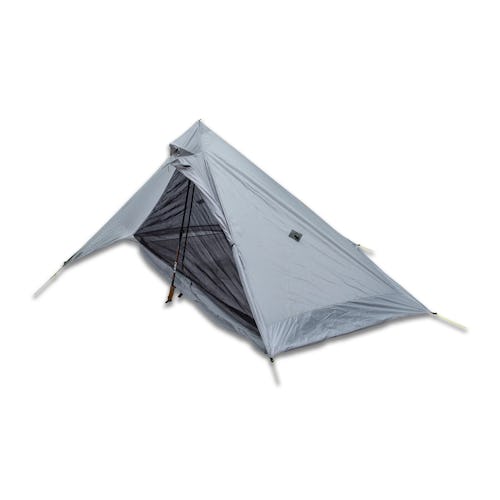
For some of us, just stringing a tarp over our heads and sleeping with the bugs might be a bridge too far. The Lunar Solo uses some unique geometry to maximize floor (26 square feet) and vestibule space for storage and comfort, while still weighing in at only 26 ounces. It easily sheds rain and snow and, unlike most tarp tents, has an internal mesh body to keep bugs and creepy-crawlies away from your sleeping space.
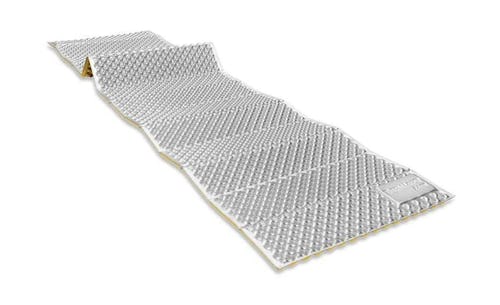
This is where weight weenies really start to sacrifice. A foam sleeping bag like this Therm-a-Rest Z-Lite Sol will never be as comfortable (or as warm) as an inflatable one, but it’s hard to beat the 14 ounce weight. Want to get even lighter? Get the short version and just deal with your feet hanging off the end. Even better, you don’t need to worry about this one bursting and leaving you flat in the dirt when you’re on a longer trip.
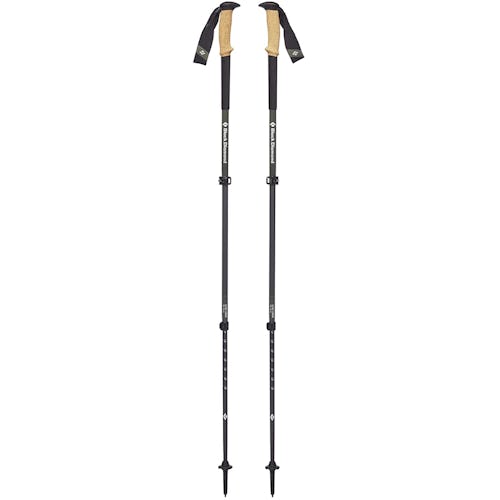
Not only do trekking poles go a long way toward saving your knees, back, and ankles, but they can always pull double duty during a thru-hike holding up your tarp shelter. And carbon is the king of lightweight materials, making the Black Diamond Alpine Carbon Cork's three-piece handles about as light as you’ll find. The cork grip is comfortable in your hand and an ergonomic strap helps more efficiently transfer your weight to them.
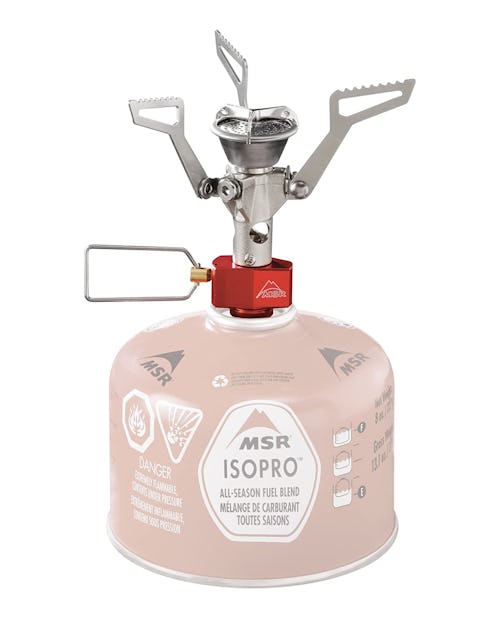
The PocketRocket might be one exception where the lightest, most packable option on the market is one you got earlier in your backpacking career. At only $50, it’s supremely affordable and it lasts a long time. The stove itself is about the size of a three-pack of golf balls, weighs less than three ounces, and puts out a flame capable of boiling one liter of water in 3.5 minutes. Mine might be the oldest piece of backpacking gear I own, pushing almost 10 years with hardly any wear and tear.
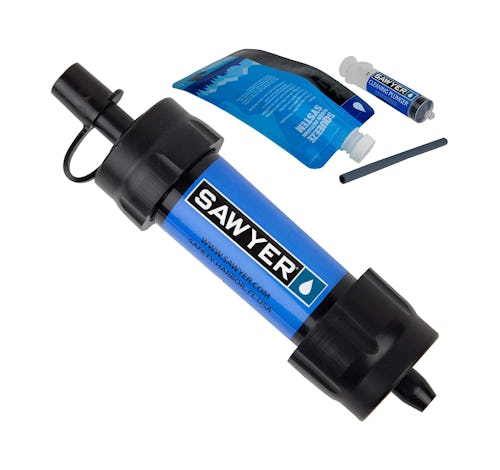
At only 1.4 ounces, the smaller version of Sawyer’s popular squeeze water filter is one of the best and easiest to use filters on the market. Just fill up the included bladder with “dirty” water, screw it onto the filter, and squeeze it through the other side to remove 99.99999% of all bacteria. Many thru-hikers will screw this on top of a water bottle and drink straight from the clean side of the filter. It’s also easy to maintain on the trail: If it slows down or gets clogged, just flush clean water through the backside.
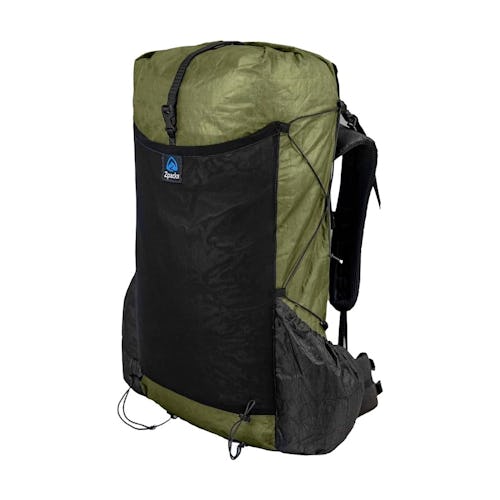
The Arc Air is primarily made from super light and super tough Dyneema and uses curved carbon fiber stays to add support to the back panel and keep it slightly off your back, allowing more airflow and transferring the pack’s weight to your hips. Otherwise, it’s designed to be simple: a roll top closure keeps moisture out, side compression straps hold your sleeping pad or trekking poles, and a massive stretch mesh pocket on front makes accessing important things easy and fast.

The Helium is a staple of lightweight water protection. The water and wind-proof jacket weighs only 6.3 ounces and packs into its own pocket, ending up small enough to fit in the palm of your hand. On top of that, the jacket uses unique diamond-shaped filaments in the fabric which lock together to keep it super durable and abrasion-resistant.







